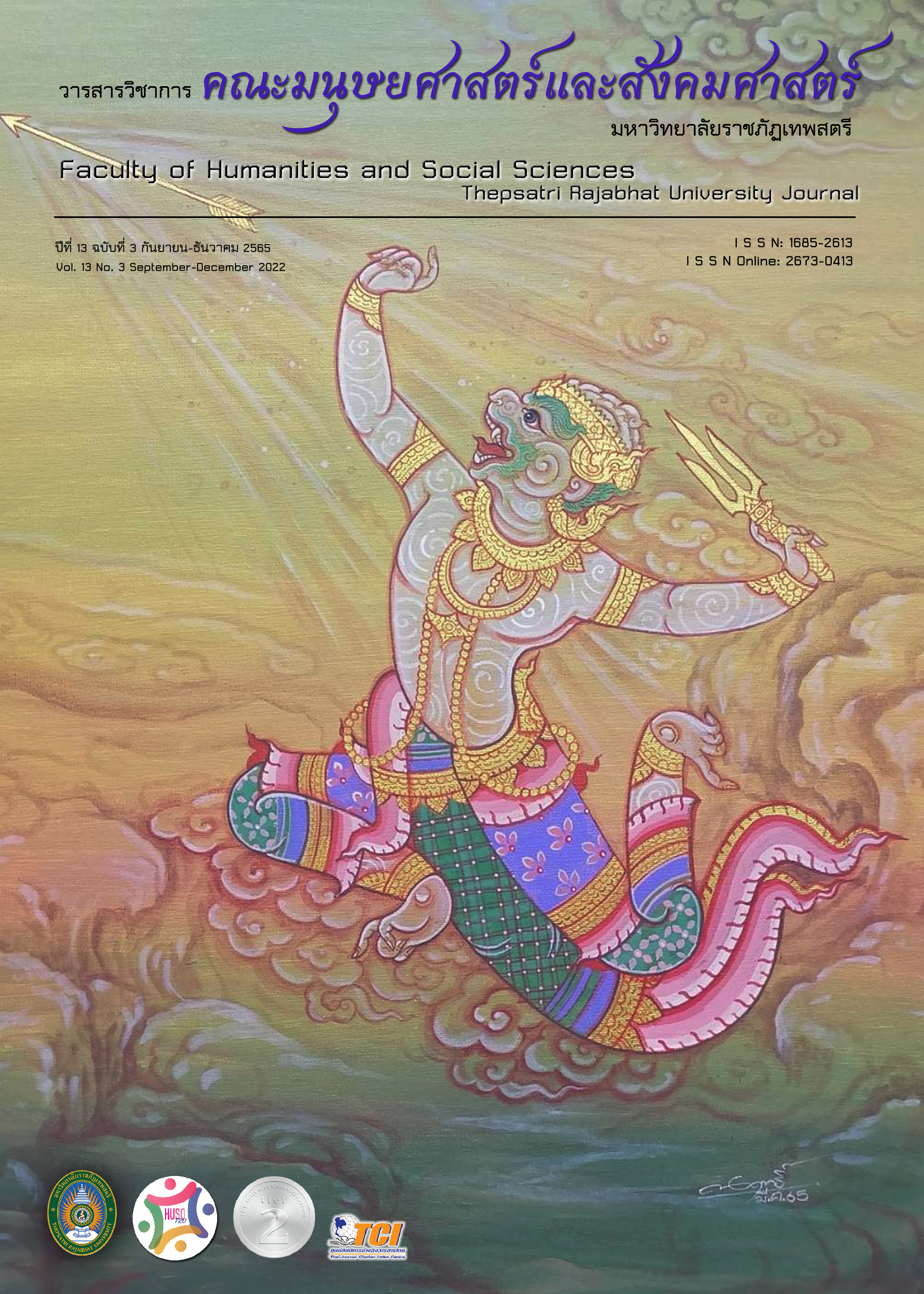Analyze The Laws and Regulations for Providing Justice for Children and Youth Drug Offenders of Different Ages
Main Article Content
Abstract
The purpose of this research was to analyze the laws and regulations for providing justice for children and youth who are drug offenders of different ages. The sample group consisted of 60 samples who experienced in dealing with children and youth who involving in drugs sentences, consisting of investigators, Juvenile prosecutor, Juvenile and Family Court, Juvenile Observation and Protection Center, Criminal Records Registration Division, Office of Police Forensic Science, Center for Medical Sciences, Provincial Social Development and Human Security, and legal advisor. The research tools included in-depth interview and content analysis was conducted in data analysis.
The results showed that 1) Children under 10 years old must act in accordance with Section 73 of the Criminal Code and immediately coordinate with the competent official under the Child Protection Law. 2) Children over 10 years but not over 15 years under Section 74 of the Criminal Code stipulates that the child was not punished. This includes fines under Section 18 (4) of the Criminal Code. And in submitting the investigation file to the public prosecutor, there must be a report showing facts concerning the child or youth of the Child and Youth Detention and Protection Center in the investigation file, And 3) children over 15 but under 18 years of age, the process of reporting allegations and questioning children or youths. The law places more emphasis on legal counsel than parents, guardians, persons or representatives of the organizations with whom the child or youth resides and the investigation of arrests. The law stipulates that it is the duty of investigators to bring children or young people to investigate for arrests. In which case, it should be a police officer who arrests a child or youth because they know and understand the details of the facts better.
Downloads
Article Details

This work is licensed under a Creative Commons Attribution-NonCommercial-NoDerivatives 4.0 International License.
The content and information presented in articles published in the Academic Journal of the Faculty of Humanities and Social Sciences, Thepsatri Rajabhat University, are solely the opinions and responsibilities of the respective authors. The editorial board of the journal neither necessarily agrees with nor assumes any responsibility for such content in any manner whatsoever.
All articles, information, content, and images published in the Academic Journal of the Faculty of Humanities and Social Sciences, Thepsatri Rajabhat University, are the copyright of the journal. Any person or organization wishing to reproduce, disseminate, or otherwise utilize all or any part thereof must obtain prior permission from the Academic Journal of the Faculty of Humanities and Social Sciences, Thepsatri Rajabhat University.
References
กรมพินิจและคุ้มครองเด็กและเยาวชน กระทรวงยุติธรรม. (2563). รายงานสถิติคดีประจำปีงบประมาณ 2563. กรุงเทพฯ: กองยุทธศาสตร์และแผนงาน กรมพินิจและคุ้มครองเด็กและเยาวชน.
ชัชญาภา พันธุมจินดา. (2553). ปัญหาทางกฎหมายเกี่ยวกับการคุ้มครองสิทธิเด็กระหว่างการสอบสวน ศึกษากรณีเด็กเป็นผู้ต้องหา. ชลบุรี: บัณฑิตวิทยาลัย มหาวิทยาลัยศรีปทุม วิทยาเขตชลบุรี.
บรรชร เกตุเทียน, และคณะ. (2562, กันยายน - ธันวาคม). การวิเคราะห์กฎหมายว่าด้วยความรับผิดทางอาญาของเด็กและเยาวชน. วารสารดุษฎีบัณฑิตทางสังคมศาสตร์, 9(3), 730 - 743.
พิชญ์สินี วงศ์ปราโมทย์. (2557). ปัญหาการตรวจสอบการจับกุมเด็กและเยาวชนตามพระราชบัญญัติศาลเยาวชนและครอบครัวและวิธีพิจารณาคดีเยาวชนและครอบครัว พ.ศ. 2553. กรุงเทพฯ: สาขานิติศาสตร์ มหาวิทยาลัยศรีปทุม.
พงศ์จิรา เชิดชู. (2558). ปัญหาการบังคับใช้มาตรการพิเศษแทนการดำเนินคดีอาญาแก่เด็กและเยาวชน. นนทบุรี: มหาวิทยาลัยสุโขทัยธรรมาธิราช.
วารุณี จันทร์ทอง. (2557, มกราคม - มิถุนายน). มาตรการในการสอบสวนเด็กและเยาวชนซึ่งกระทำความผิดอาญาตามพระราชบัญญัติศาลเยาวชนและครอบครัวและวิธีพิจารณาเยาวชนและครอบครัว พ.ศ. 2553. วารสารรามคำแหงฉบับนิติศาสตร์, 3(1), 71 - 80.
ศิรชัย หาญเทิดพงษ์ชัย. (2557). ปัญหาทางกฎหมายในการสอบปากคำเด็กในชั้นสอบสวน. กรุงเทพฯ: สาขานิติศาสตร์ มหาวิทยาลัยธุรกิจบัณฑิตย์.
สุวรรณา คุณดิลกณัฐวสา. (2563). การปฏิบัติต่อเด็กที่ต้องหาว่ากระทำการอันกฎหมายบัญญัติเป็นความผิดแต่อายุยังไม่ถึงเกณฑ์ต้องรับโทษทางอาญา. วารสารโรงเรียนนายร้อยตำรวจ, 1(2), 4 - 30.
สำนักงานคดีเยาวชนและครอบครัว สำนักงานอัยการสูงสุด. (2564). คู่มือการดำเนินคดีเยาวชนและครอบครัว ฉบับปรับปรุง พ.ศ. 2563. กรุงเทพฯ: บริษัท แอ๊คคิวเรทเพรส จำกัด.
สำนักงานอัยการสูงสุด. (2563). ระเบียบสำนักงานอัยการสูงสุด ว่าด้วยการดำเนินคดีอาญาของพนักงานอัยการ พ.ศ. 2563. กรุงเทพฯ: สำนักงานอัยการสูงสุด.
อรุณรัตน์ ธำรงศรีสุข. (2563). การปรับใช้แนวคิดการลงโทษให้ได้สัดส่วน (Just Deserts) กับการพิจารณาความผิดที่เด็กและเยาวชนเป็นผู้กระทำในฐานความผิดเกี่ยวกับเพศว่าด้วยการข่มขืนกระทำชำเรา. กรุงเทพฯ: สาขานิติศาสตร์ สถาบันบัณฑิตพัฒนาบริหารศาสตร์.


